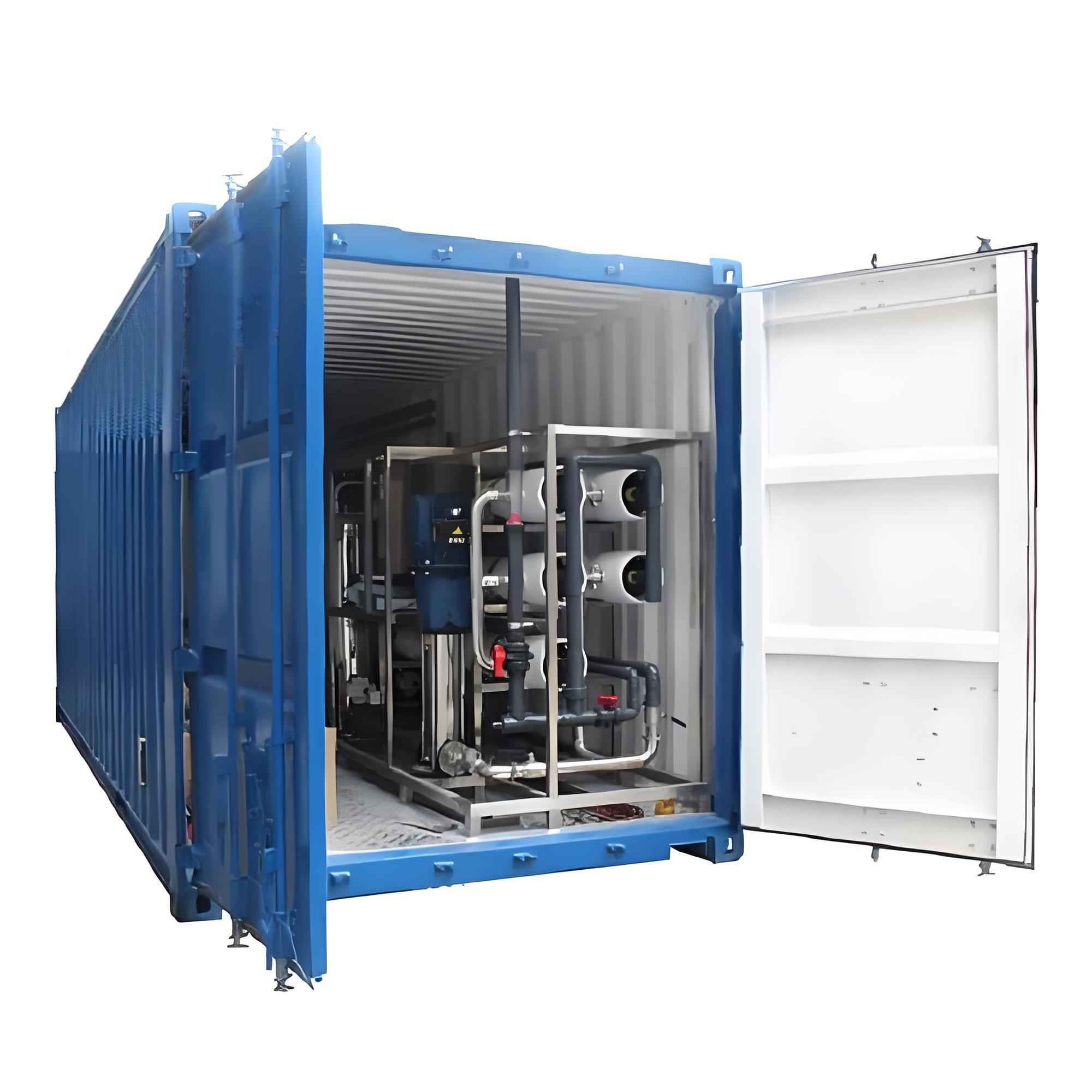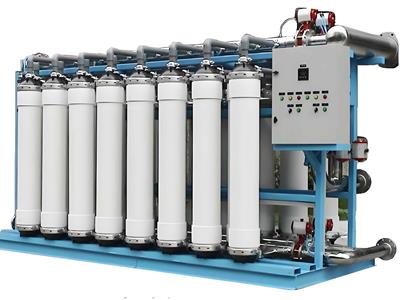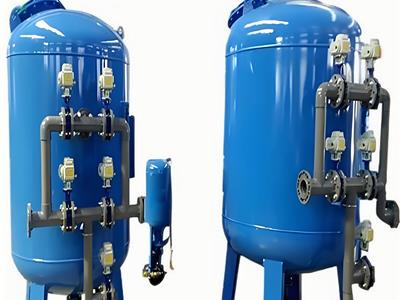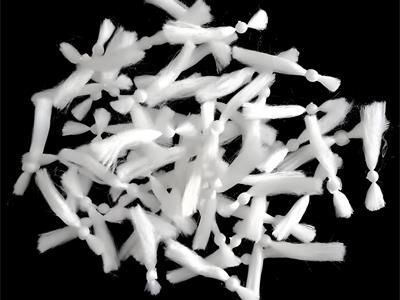- 2025-07-14
Containerized equipment
Containerized/Mobile Integrated Water Treatment Equipment
FupengWater helps simplify processes by designing containerized equipment through collaborative solutions. We ensure that mobile water treatment systems have important features such as mobility, durability and protection to reduce long-term costs.
Fast delivery and many solutions designed to improve safety and convenience make our containerized equipment stand out from the competition. Read the information below to better understand the actual experience of our users:
Use containerized water treatment systems to easily solve the problems of large reverse osmosis units. Choose pre-designed modular units that are fully assembled in standard 20-foot and 40-foot containers, or 10-foot containers, so there is no need to build complex water purification systems. Containerized water treatment systems can be transported directly to where drinking water is needed. With only simple training, commissioned workers can monitor the system and produce high-quality drinking water within a few days of delivery.
Benefits of our containerized equipment:
Designed to reduce overall project costs, including labor-related expenses
Reduce downtime and operating costs with spare equipment
Increase productivity and reduce project management issues
Quick, guaranteed delivery, eliminating uncertainty
Safe and easy installation
Rugged construction, 100% safety
With over two decades of experience, FupengWater is the industry's top supplier of containerized water treatment equipment for a variety of applications. Our team offers a wide range of water treatment systems that can be converted into mobile units to meet your industrial and commercial needs. View our comprehensive list of containerized equipment above to find the best one for your needs.
These systems typically include:
Interconnecting piping between components and systems
Cables and wiring between instrumentation and main control cabinet inside the container
Operation and maintenance manuals
General arrangement drawings 3D/2D CAD drawings
Temperature ("hot/cold" vessels)
In hot climates, electrical equipment and fluids must be kept below 35 degrees Celsius to ensure good process performance. The internal temperature of a vessel in direct sunlight can easily reach 80 degrees Celsius. Therefore, we offer air-cooled insulated containers with an external sun-blocking coating.
In cold climates, liquids must be kept above their freezing point, while electrical equipment can be damaged at temperatures below 5 degrees Celsius. In such cases, we offer insulated containers with heating equipment to solve this problem.
What is a containerized water treatment plant? Containerized water treatment systems offer a number of key advantages over fixed plant installations:
Short installation process
Compact footprint
Easy to transport
Mobile for easy construction site access
Where are containerized water treatment systems used?
Whether your application is drinking water, process water, or wastewater, an onsite containerized water or wastewater treatment system is more practical and economical than purchasing treated water or discharging wastewater to a water treatment facility to remove harmful contaminants from the water. Here are some of the industries that most commonly use containerized water treatment systems:
Public distribution
Mining
Military
Agriculture
Disaster relief
Swimming pools
Power & Energy
Wastewater
What is a mobile water treatment plant?
Mobile water treatment and purification units are designed to meet emergency, temporary solutions (such as construction sites) or long-term water treatment needs. These mobile systems can be housed in 20-foot or 40-foot seaworthy containers or combined into complete systems with advanced water treatment and purification technologies. These mobile treatment container units are equipped with insulation, diamond-shaped floors, LED lighting, climate control and access hatches. Our mobile or containerized solutions use brackish or seawater reverse osmosis, ion exchange, ultrafiltration systems, multimedia filtration and MBR technologies and are transported by sea or inland on trailers.
Advantages of Mobile Water Treatment Systems
The advantage of a containerized solution is that once the mission is completed, it can be used as a mobile water treatment system at different sites. These systems are flexible and durable, suitable for any environment, and equipped with a variety of options. Our mobile water treatment systems are designed to address the following aspects:
Treat water from any source
Seasonal changes in water
Quick delivery
Treat changes in water quality
Temporary use until the system is stable and put into operation
FupengWater containerized/mobile integrated water treatment equipment
FupengWater containerized/mobile integrated water treatment equipment is not only easy to operate and space-saving, but also equipped with intelligent modules and monitoring systems, which can realize the digitization and Internet of Things of integrated equipment, further realize unmanned operation, remote monitoring, risk warning and other intelligent functions, improve user experience, reduce investment costs, and the equipment can treat 5,000-5,000 tons of sewage per day.
Our containerized sewage treatment system is a portable containerized sewage treatment system. The main body of the container consists of a pumping unit, a primary MBBR reactor, a secondary MBBR reactor and a sedimentation tank, and the sedimentation tank outlet is located outside the sedimentation tank.
The internal components of the container also include a dosing device connected to the primary MBBR reactor and the secondary MBBR reactor through pipes and valves, a workbench for measuring wastewater and stacking drugs and tools, a control cabinet for monitoring and controlling the operation of the equipment, and a power supply connected to the car engine through a cable.
Contact us to get a quote for a containerized wastewater treatment system.
The ultimate FAQ guide for containerized sewage treatment plants.
To mitigate further environmental pollution, wastewater discharged from residential, commercial complexes, and industrial sites must be adequately treated before it can be discharged. Different laws have been enacted to regulate the quality and discharge methods of domestic and industrial wastewater.
Among them, most industries, domestic homes, and municipalities are currently compliant with wastewater discharge regulations, thanks to wastewater treatment technologies and systems. Below we focus on containerized wastewater treatment plants and their different application areas.
➣What is a containerized wastewater treatment plant?
A containerized wastewater treatment plant is a uniquely designed wastewater treatment system that is pre-installed in a standard container. Wastewater treatment plants usually regulate industrial and residential wastewater discharge to ensure that the wastewater can be re-injected into the regular water cycle. For most industries, especially those in the chemical industry, wastewater treatment systems are mandatory. This is because non-compliance with existing discharge quality and disposal regulations may result in heavy fines or unnecessary legal disputes.
Containerized wastewater treatment plants are highly regarded in various fields due to their high mobility, convenient operation, and high treatment efficiency. They deploy multiple technologies at different stages to effectively treat your wastewater. Typically, they remove high concentrations of pollutants such as suspended solids, dissolved solids, biochemical oxygen demand (BOD), nitrates and phosphorus from the water. This is achieved by using unique technologies such as activated sludge treatment, reverse osmosis, ultrafiltration, membrane bioreactor treatment and ultraviolet sterilization.
➣ How do containerized wastewater treatment plants work?
Treatment of wastewater using containerized wastewater treatment plants is usually divided into several stages: primary treatment, primary treatment, secondary treatment and tertiary treatment. Below, you will be taken through the complete wastewater treatment process.
● Primary screening.
Treatment of industrial or domestic effluent begins with screen screening, which removes larger components that can damage plant components. Removed components include glass fragments, wood chips and plastics, which are then washed and discarded to landfills.
● Grit removal.
Grit refers to fine sand or stone particles. These components are difficult to extract during the primary screening process and can clog major water treatment components. When water treatment is performed, these components need to be extracted by physical methods and then treated appropriately.
● Primary clarification.
Primary clarification mainly removes suspended solids through a sedimentation or gravity settling process. The solid components suspended above the sewage are removed before the wastewater is biologically treated. The components that settle at the bottom of the primary clarifier are called sludge and can be removed by a sludge removal system. Typically, this process removes 60% of suspended solids and 30-40% of the biochemical oxygen demand (BOD).
● Aeration.
In order to initiate the biological treatment of wastewater, air or oxygen needs to be pumped into the wastewater. This promotes the proliferation and growth of bacteria and converts NH3 into NO3. The growth of bacteria is essential because they are then used to break down organic components.
● Secondary clarification.
The working principle of secondary clarification is the same as that of primary clarification. The treated wastewater is fed into the secondary clarifier, where the remaining organic matter is extracted by gravity settling. The microbial biomass used in the biological treatment process settles at the bottom of the secondary clarifier in the form of activated sludge. A portion of the activated sludge is reintroduced into the aeration tank, while the remainder is discharged or treated.
● Wastewater sterilization and disinfection.
To complete the wastewater treatment, we utilize UV sterilization or chlorination to eliminate harmful microorganisms. Specifically, the process is designed to extract bacteria that remain in the contact chamber. If you use chlorination, you must test the chlorine content in the wastewater to ensure that the specified limits are not exceeded.
➣ What are the application areas of containerized wastewater treatment plants?
The continuous growth of population and industrialization has led to an increase in wastewater discharge. To this end, various departments have enacted several laws to regulate wastewater treatment and water quality. This has made the deployment of wastewater treatment equipment a necessity for most industries.
At the same time, containerized wastewater treatment plants have gradually become the preferred wastewater treatment system due to their immeasurable benefits. They are easy to transport and can be used as a permanent or temporary solution. Their application areas cover residential, commercial and industrial wastewater treatment. Here are some of the well-known industries that rely on containerized wastewater treatment plants.
Industries such as pharmaceutical, cosmetics and chemical manufacturing companies.
Residential and commercial enterprises.
➣What types of containerized wastewater treatment plants do you produce?
FupengWater’s customer base spans a wide range of industries, so we produce different versions of water treatment equipment. We specialize in
different types of containerized wastewater treatment units, both standard and customized, offered by FupengWater.
● Containerized membrane bioreactor units.
Containerized membrane bioreactor units integrate membrane filtration and biological treatment to produce high-purity effluent that complies with effluent regulations. The pore size range of membrane filtration systems used in membrane bioreactor units is 0.05 to 0.4 microns. Ultrafiltration filtration systems and microfiltration systems are the main membrane treatment systems used in MBR units to extract suspended solids. The biological process, namely activated sludge treatment, is used to break down biodegradable organic matter. These units operate in two process configurations;
● Containerized activated sludge treatment plants.
These are typical containerized activated sludge treatment systems with an activated sludge treatment unit installed inside. In these systems, a multi-chamber reactor filled with microorganisms is used to extract nutrients and break down organic pollutants in wastewater. These systems contain aeration tanks to provide oxygen to the microorganisms that degrade organic matter. Containerized activated sludge treatment systems are ideal for industrial and municipal wastewater treatment.
● Containerized wastewater treatment plants.
Containerized wastewater treatment units are systems designed specifically to treat industrial wastewater. They allow industrial wastewater to be reintroduced into the ecosystem in accordance with discharge regulations. They also produce high-quality effluent that can be used for other purposes such as irrigation. We manufacture standard and custom wastewater treatment units and meet the needs of industries of all sizes with different capacity requirements.
● Containerized reverse osmosis systems.
Deploying containerized reverse osmosis systems in industrial wastewater treatment can improve effluent quality. The systems are capable of removing a variety of different contaminants and are primarily used for tertiary treatment. They are capable of removing high concentrations of microorganisms, total dissolved solids (TDS), nutrients, and minerals.
➣ What does a containerized wastewater treatment plant do?
Environmental pollution caused by improper disposal of industrial wastewater has spread across the globe. To avoid further pollution, countries have enacted various wastewater treatment regulations. These regulations mainly require industries that generate concentrated wastewater to treat it before discharge or reuse. Containerized wastewater treatment plants can help businesses and households comply with their respective environmental regulations. This way, users are protected from unnecessary large fines and heartbreaking legal disputes. In addition, they help protect ecosystems from industrial pollution. By extracting harmful pollutants, they ensure the safety of workers and surrounding communities. Wastewater treatment systems also mitigate the spread of waterborne diseases by eliminating pathogenic microorganisms. ➣Do containerized wastewater treatment plants use membrane bioreactor technology? Yes. Membrane bioreactor treatment has become a popular wastewater treatment technology in recent years. The technology combines biological treatment and membrane filtration to effectively remove organic matter and increase total suspended solids (TSS) content. Typically, biological treatment uses activated sludge treatment, while suspended solids are removed using ultrafiltration systems or microfiltration systems.
MBR systems are generally divided into vacuum-driven systems and pressure-driven systems. Pressure-driven systems are essentially cartridge-type systems installed outside the bioreactor. Gravity-driven or vacuum-driven MBR systems are usually submerged and often use flat membranes or hollow fiber membranes. A fully functional membrane bioreactor unit contains 10 to 11 subsystems, including screening equipment, aeration equipment, disinfection systems, and clarifiers.
The biological process used by MBR units is mainly driven by oxygen. Diffusers or aeration tanks pump oxygen into the system to promote the growth of microorganisms. The microorganisms in turn are used to degrade organic compounds and scrub the membrane surface. These systems are relatively smaller than traditional activated sludge units, but the effluent water quality is first-class. The following are examples of the application of membrane bioreactor treatment technology in wastewater treatment.
➣What post-treatment technologies are used in containerized wastewater treatment plants?
To comply with some of the strict wastewater discharge regulations, you may need to post-treat the wastewater discharged from your containerized wastewater treatment plant.
Some of the most effective and widely used wastewater post-treatment mechanisms are discussed below.
● Reverse Osmosis.
Reverse Osmosis is a pressure-driven process that uses a semi-permeable membrane to separate dissolved solids and other contaminants from a liquid. This process is used to polish the treated wastewater to remove harmful impurities such as microorganisms, minerals, nutrients, dissolved solids, and metals.
● UV Water Disinfection.
Ultraviolet (UV) sterilization is a disinfection mechanism used to remove pathogenic microorganisms from water. It is a non-chemical process that uses germicidal radiation to kill microorganisms. UV water sterilizers do this by damaging the DNA cells of microorganisms, thereby inhibiting their growth or reproduction.
● Water Deionizer.
Water deionization refers to the removal of ionic contaminants in water by replacing them with non-polluting ions. Typical water deionization
The system consists of anion exchange resins and cation exchange resins. Anion exchange resins absorb hydroxide (OH-) ions, which are used to replace anionic impurities such as chloride and nitrate. Cation exchange resins absorb hydroxide (H+) ions, which are used to replace cationic impurities such as calcium and sodium.
➣ How is activated sludge treatment performed in containerized wastewater treatment plants?
Activated sludge treatment is a biological process that uses microorganisms to break down organic matter in wastewater. An activated sludge treatment unit for wastewater treatment consists of three main parts. Aeration tanks are essentially bioreactors that provide air to catalyze the growth of bacteria. Sedimentation tanks or clarifiers are used to separate activated sludge from treated wastewater. Finally, there is a return system that injects activated sludge from the clarifier as influent into the aeration tank.
Air or oxygen is pumped into the treated sewage and mixed with microorganisms to form a mixed liquor solution. Microorganisms degrade biodegradable impurities such as organic compounds to produce sewage with a lower organic content. Watch the following animated video to get a better understanding of active
sludge treatment.
➣What components make up a fully functional containerized wastewater treatment plant?
Ideally, a wastewater treatment plant consists of different components, depending on the process it uses and the quality of the wastewater it produces.
However, some major components are fixed in all containerized wastewater treatment systems. Here is a breakdown of the major components that make up a functional wastewater
treatment plant.
● Container.
Typically, we use standard 40-foot or 20-foot containers to house other important components of the wastewater treatment system. We equip the container
system with adequate lighting and air conditioning to make operation more convenient.
● Control Panel.
A control panel is a user interface through which users can issue instructions to a complex wastewater treatment plant. Typically, the
control panel installed in the system depends on the level of automation of the wastewater treatment plant, such as semi-automatic or fully automatic.
● Clarifier.
A clarifier is a settling device where suspended solids settle to the bottom through sedimentation. A typical wastewater treatment system consists of a primary clarifier
and a secondary clarifier.
● Filtration system.
A wastewater treatment plant must be equipped with a filtration system. This system removes residual suspended solids, grit, dust, and turbidity. Typically, a containerized wastewater treatment plant integrates a multi-media filter, an activated carbon filter, a pressure sand filter, and an iron removal filter.
● Chemical dosing system.
Chemical dosing systems used in wastewater treatment plants typically pump in chemical reagents that aid in coagulation and flocculation. They can also pump chlorine into the treated wastewater to kill pathogenic microorganisms.
● Post-treatment system.
Depending on the desired effluent quality, wastewater treatment systems use different post-treatment systems. Common post-treatment systems include UV water sterilizers, reverse osmosis systems, water deionizers, and electrodeionization equipment.






